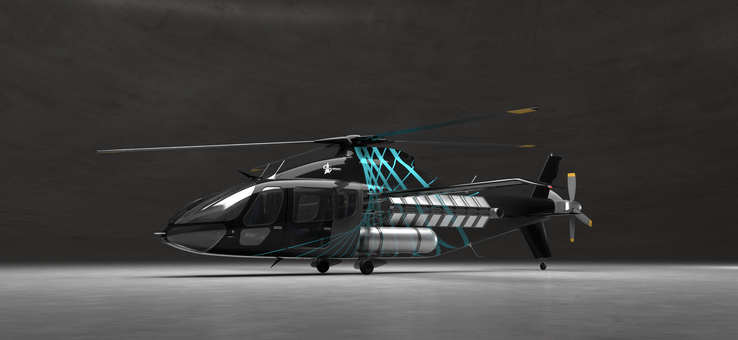Piasecki, or at least PiAC, is moving its R&D division to new premises. More precisely, the helicopter manufacturer has announced the acquisition of the former Lockheed Martin Sikorsky Heliplex site in Coatesville, Pennsylvania, which previously served as a production and delivery center for Sikorsky's S-76 and S-92 helicopters. The new R&D facility will be used to develop the PA-890, whose hydrogen-powered electric motor is being studied in partnership with ZeroAvia.
Piasecki at Sikorsky
Piasecki, the historic helicopter manufacturer -including the famous flying banana developed by Franck Piasecki in the aftermath of World War II- announced on May 31, 2023 the acquisition of the former Lockheed Martin Sikorsky Heliplex site in Coatesville, Pennsylvania, which previously served as the production and delivery center for Sikorsky's S-76 and S-92 helicopters.
A new R&D
The company will transform this state-of-the-art facility of just over 20,345 square meters into an advanced R&D center for next-generation vertical takeoff and landing (VTOL) aircraft, unmanned aerial systems (UAS) and related enabling technologies. In particular, this is where the company's next PA-890 helicopter, the world's first zero-emission hydrogen fuel cell helicopter, will be built and tested. The site, which includes engineering development, aircraft assembly, painting and finishing facilities, as well as a well-equipped flight test and delivery center, will open its doors to employees in the fall and is expected to attract around 400 workers by 2028.
80 years of history
"2023 marks 80 years of PiAC vertical flight innovation, a legacy that began in 1943 with the PV-2, the second successful helicopter to fly in America, now on display at the Smithsonian Air & Space Museum. Shortly thereafter, PiAC developed the world's first tandem rotor helicopter - a revolutionary design that has been instrumental in countless rescue missions around the world since World War II - and lives on in Boeing's CH-47 Chinook helicopters," said Piasecki. "PiAC builds on this heritage with a truly revolutionary portfolio of vertical lift technologies, including advanced digital flight controls and flight automation technologies, hybrid and hydrogen fuel cell propulsion systems, morphological aerostructures, and much more. We are working closely with government, academic and industrial partners to advance these technologies and develop air vehicle integrations at the platform and system level, as well as conducting flight tests."
Towards the PA-890 with ZeroAvia
At this new site, the PA-890 ADAVe (eVTOL) will therefore be developed. This slow-moving rotary-wing helicopter is intended for a variety of missions, including emergency medical services (EMS), delivery of high-value on-demand logistics services (ODL), on-demand air transport of personnel (ODM), as well as many other commercial applications. In addition to zero carbon emissions, the PA-890 eVTOL offers up to 50% lower direct operating costs and reduced noise compared to today's fossil-fuel turbine helicopters. PiAC is collaborating with ZeroAvia to develop and implement its high-temperature proton exchange membrane (HTPEM) hydrogen fuel cell technology for the PA-890 and other ADAV applications. The U.S. Air Force's investment in ground testing of a 660 kW HTPEM hydrogen fuel cell propulsion system accelerates the development, certification and field production of the PA-890 to meet the needs of the military and the $40 billion light commercial helicopter market. Alongside the PA-890 will also be developed Ares, an acronym for Aerial Reconfigurable Embedded System.
Ares
ARES is a modular, multi-mission ADAV aircraft that can be operated unmanned (UAS) or with an optional manned flight module. The demonstration vehicle was developed in partnership with Lockheed Martin and funded by DARPA. With additional funding from the U.S. Army and Air Force, PiAC and Honeywell are developing and integrating a triplex fly-by-wire flight control system to launch ARES flight tests by the end of the year.
.Découvrez cet article sur Air&Cosmos

